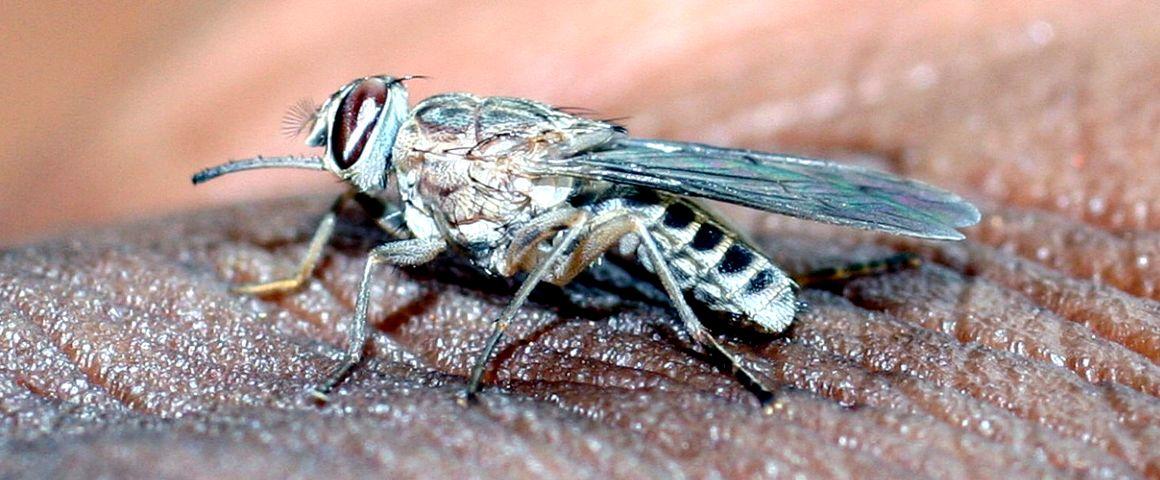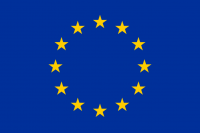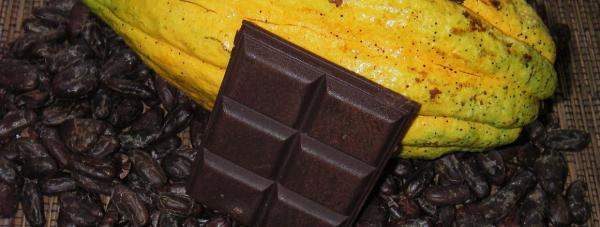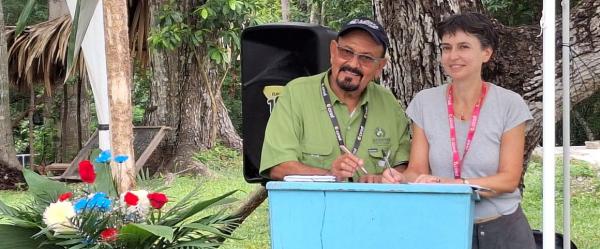Science at work 16 December 2025
- Home
- Press area
- Press releases
- Fight against neglected tropical diseases in Africa
COMBAT, a new project to fight animal trypanosomosis

The tsetse fly is a species endemic to Africa. They can be vectors of diseases, such as animal or human trypanosomiasis. © J. Bouyer, CIRAD
Animal trypanosomes (see box) pose serious economic problems for livestock farmers in Africa. There is no vaccine, and existing drugs are losing their effectiveness through the development of resistance in the parasites. Existing diagnostic methods are difficult to use in the field, while vector control tools, often not environmentally friendly, need to be improved.
"The direct and indirect impacts of tsetse and trypanosomosis are estimated at an annual loss of $4.5 billion in Africa. The losses are manifested due to impacts on livestock productivity, on migration and human settlement, on livestock management, on crop production, land use, ecosystem structure and function; and human welfare. It is evident from this that the three sectors affected by tsetse and trypanosomosis are human health, livestock health and rural development, thereby placing the challenge at the heart of African rural development", said Gift Wanda of the African Union - Pan African Tsetse and Trypanosomosis Eradication Campaign.
Over the past twenty years, progress in the control of animal trypanosomosis has been limited. This is in stark contrast to the great progress made in the control of sleeping sickness. Sleeping sickness caused devastating epidemics in the 20th century, but the World Health Organization has now targeted its elimination.
Weining Zhao, FAO Senior animal Health Officer, expressed his “deep appreciation for the launch of this new project to tackle this enormously important One Health problem, which affects the lives and livestock and environment of millions of vulnerable livestock keepers in Africa”. “We are confident that the strong engagement of African, European and international institutions will ensure the full achievement of the project objectives”, he said.
“To reduce or eliminate the disease, the COMBAT project will rely on an innovative, risk-based approach called "progressive control pathway" (PCP)”, explained Giuliano Cecchi, an expert on African trypanosomosis at the FAO.
Over a period of 4 years, COMBAT will improve the knowledge base on animal trypanosomes (pillar 1); develop innovative control tools (pillar 2); consolidate surveillance, diagnosis and control networks by setting up harmonised epidemiological information systems and national and regional control strategies (pillar 3); and strengthen the capacity of African livestock farmers and veterinary services to fight the disease while raising awareness among policy makers concerned with food security and poverty reduction (pillar 4).
"The strength of this project lies in the fact that it brings together in the consortium both European and African research institutions, as well as the veterinary authorities of target countries. The project also has the support of international organizations, first and foremost the FAO, but also the African Union, the OIE, the WHO and the IAEA, which means that it has a major impact on all the stakeholders", explains Alain Boulangé, the project coordinator for CIRAD.
Research will include studies on the capacity of vectors to transmit the disease, their spread and role in its dissemination, disease tolerance of livestock species in Africa, and drug resistance of trypanosomes.
In terms of control tools, about ten tools will be examined. They will range from new environmentally friendly insect vector control devices to innovative diagnostic tests and the development of new trypanocidal molecules.
The project will also strengthen surveillance of the disease and its vectors, predict the risk of spread and develop information systems to enable rational risk-based decision making. The progressive control of the disease will be promoted through the development of internationally-agreed guidelines and harmonized strategies at the national and regional levels.
Elisabeth Claverie de Saint Martin, CIRAD's CEO, is delighted with the launch of COMBAT: “the fight against neglected tropical diseases is a major international challenge, one that is vital to the development of some of the most vulnerable populations”. She added: “CIRAD is aware of the great responsibility that such a project entails, and we strongly believe that the key to its success lies in the close cooperation with our excellent African, European and international partners”.
List of consortium partners:
- French Agricultural research Centre for International Development, CIRAD, France
- Institute of Research for Development, IRD, France
- Institute of Electronics and Systems (University of Montpellier), IES, France
- Vrije Universiteit Brussel, VUB, Belgium
- Universidad de Las Palmas de Gran Canaria, ULPGC, Spain
- International Centre of Insect Physiology and Ecology, ICIPE, Kenya
- International Development Research Centre for Livestock in Sub-humid Zones, CIRDES, Burkina Faso
- Universidade Eduardo Mondlane, EMU, Mozambique
- Makerere University, MAK, Uganda
- Senegalese Institute for Agricultural Research, ISRA, Senegal
- Pierre Richet Institute (National Institute of Public Health), IRD, Ivory Coast
- Livestock Research Institute for Development, IRED, Chad
- Central Veterinary Research Laboratory (Animal Resources Research Corporation), CVRL, Sudan
- Agricultural Research Council, ARC, South Africa
- Bobo-Dioulasso Insectarium (Ministry of Animal Resources and Fisheries), IBD, Burkina Faso
- Mission Spéciale d'Eradication des Glossines (Ministry of Livestock, Fisheries and Animal Industries), MSEG, Cameroon
- National Institute for Control and Eradication of Tsetse fly and Trypanosomosis, NICETT, Ethiopia
- Kenya Tsetse and Trypanosomiasis Eradication Council, KENTTEC, Kenya
- Tsetse and Trypanosomiasis Control Unit (Ministry of Fisheries and Livestock), TTCU, Zambia
- Division of Tsetse Control services (Ministry of lands, agriculture, water and rural resettlement), TCD, Zimbabwe
- Food and Agriculture Organization of the United Nations, FAO, Italy
This project has received funding from the European Union’s Horizon 2020 research and innovation programme under grant agreement No 101000467.




























